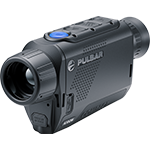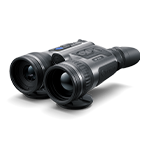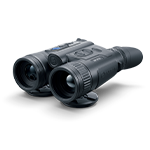Thermal for Ecology: Why You Should be Using a Thermal Imaging Device to Enhance Your Surveying Capabilities
Thermal imaging devices can be incredibly advantageous pieces of kit for a wide variety of applications. In this instance, we’ll be delving into thermal imaging for ecology, revealing how they can provide more reliable results during bat surveys, wildlife conservation efforts, and research and development (among other uses). We’ll explain how these intuitive devices can yield a much greater quantity of data in the field when compared to more traditional methods (i.e. using the naked eye), all while requiring minimal effort.
How Does It Work?
Thermal imaging devices use highly sensitive thermal sensors to detect finite changes in the temperature of objects in an observed environment, converting the infrared radiation (heat) into a high-resolution picture; allowing you to scan an area and detect heat signatures, from right in front of you to as far as 2 miles away!
Thermal imaging devices can be used in both daylight hours and after dark, providing greater opportunities to uncover roosting locations and entry and emergence points when compared to traditional observation methods. Perhaps most conveniently, most thermal imaging devices can be tripod mounted and allow for long periods of video recording (some even with audio), which means the camera can be left to record for hours on end, allowing the surveyor to carry out other work without any activity being missed.
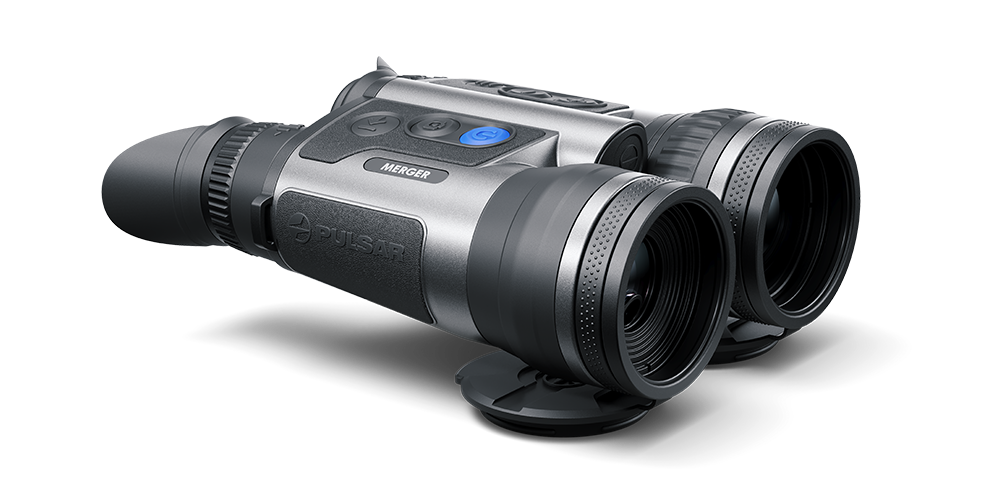
Finding the Perfect Device For You
Pulsar Wildlife devices come in either a monocular or binocular format and we know that finding the device that will provide the most accurate data can be tricky, as each device’s specification varies.
It is also worth being aware of limitations; a single device may not be able to achieve every task you are hoping to.
Each device in the Pulsar Wildlife range carries with it a variety of useful features designed to enhance your observation and surveying efforts. These include:
Extraordinary Detection Capabilities
Every thermal imaging device features a sensitive thermal sensor, but there are varying sizes of sensor resolution available. Generally speaking, the bigger the sensor the better the picture, because a larger sensor can capture more detail.
Pixel Pitch
Each thermal sensor will also feature a defined pixel pitch (µm), indicating the distance between adjacent pixels. Sensors with a smaller pixel pitch are physically smaller and their benefits include higher magnification and better clarity at distance, whereas a larger pixel pitch will offer greater levels of thermal sensitivity, meaning an more balanced and detailed scene.
- A pixel is a single radiation receiver as part of the sensor
- Pixel Pitch refers to the distance measured from the centre of each adjacent pixel
- Sensor Resolution refers to the number of pixels within the sensor
- Together these will determine the physical size of the sensor
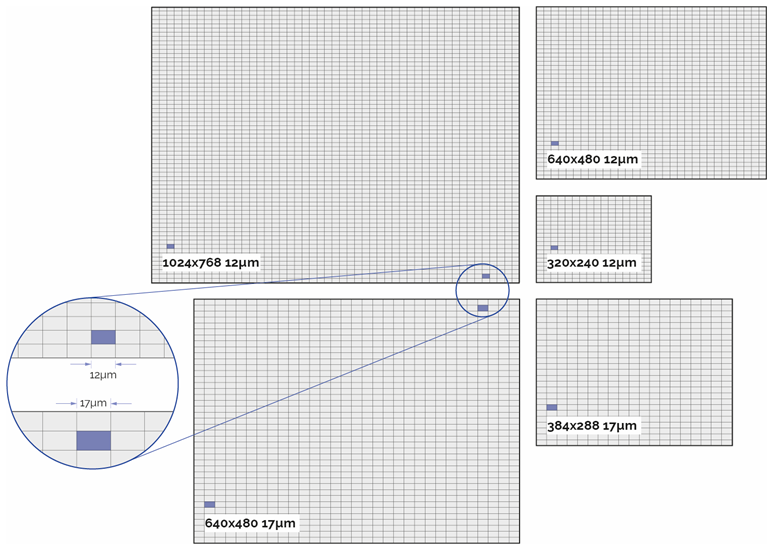
| 12µm Pixel Pitch Sensor | 17µm Pixel Pitch Sensor |
| Equal FOV and magnification with a smaller lens focus. | Higher sensor sensitivity. |
| Equal detection range with a smaller lens focus in normal weather conditions. | Higher thermal and spatial image resolution. |
| Suitable for observation over longer distances in normal thermal contrast conditions. | Better recognition capabilities in rain and fog. |
| Compact dimensions. | Lower noise level. |
| Lower price points. | Multi-purpose use. |
Extreme Thermal Sensitivity
As an ecologist, you’ll understand the importance of being able to differentiate between the animal or objects you are trying to detect and their surroundings. This is where thermal sensitivity becomes paramount.
A device’s thermal sensitivity is reflected by its Noise Equivalent Temperature Difference (NETD) rating; a measurement of the smallest temperature difference the device is able to detect. The lower this NETD value, the more sensitive the thermal imager becomes, performing better than a device with a larger NETD value in challenging conditions such as colder temperatures, dense fog, and heavy rain. See below for an example of how the NETD rating affects the performance of a thermal imaging device in a low-contrast scene:
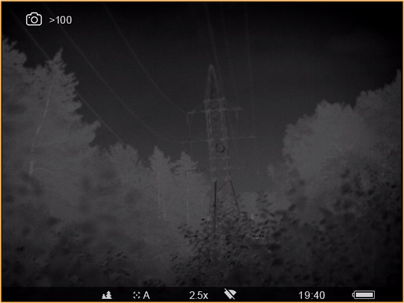
<40mK NETD sensor in a low-contrast scene
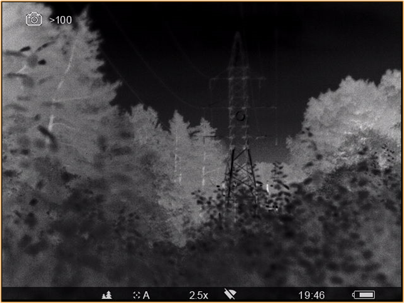
<25mK NETD sensor in a low-contrast scene
Wide FOVs For Greater Observation Opportunities
A thermal imager’s field of view (FOV) will define the size of the area viewable through the device at a defined distance and differs for each thermal imager, so it is beneficial to check this before deciding which device to buy. Generally, the wider the FOV, the more comfortable your observation experience will be, as there is less need to move the device to observe the area in front of you.

For bat surveys and other ornithological applications, a wider field of view would provide greater observation and detection opportunities and therefore glean better results when studying recorded data after the fact.
It is worth remembering that the FOV is inversely proportional to magnification, which means that once the magnification is increased the FOV will decrease. This is one of the reasons why infrared systems (and thermal imagers in particular) with higher magnifications are not manufactured.
It is also important to understand that an increase in the field of view leads to a decrease in detection and recognition range.
Extreme Operating Temperatures
Every thermal imaging device from Pulsar has been designed to withstand extreme temperatures and unfavourable weather conditions; operating in freezing conditions or in blistering heat, heavy downpours, or high levels of humidity — keeping your surveys going come rain or shine.
What’s more, although the bodyshells of these devices can vary in their construction material (from magnesium alloy to rubber armored reinforced plastic), each device is designed to withstand heavy use in unforgiving conditions. So, when you’re using a Pulsar thermal imager for ecology applications, you’re well protected against the everyday bumps, knocks, and scrapes one would expect during prolonged use.
Video Recording Capabilities
Perhaps the most important feature of a thermal imaging device for any ecologist is the ability to record and analyse the findings of a survey, which is why every Pulsar device features a built-in video recorder (with audio) and still image capture capabilities. These video recorders can record for long periods of time and — because these devices are tripod mountable — can even be left in position on record for a couple hours at a time (depending on model and settings).
Plus, with connectivity options and dedicated apps for iOS/Android smartphones/tablets such as Stream Vision 2, you can even check back on recordings in the field, as each image or video taken on the thermal imaging device can be stored in the cloud for instant playback.
Compare Our Recommended Devices:
We understand that choosing a thermal imaging device can seem like a daunting task; with so many elements to consider and so many specifications available, it can be hard to decide which device would be best for your application. With this in mind, we’ve selected a handful of devices across our entire product range we consider best suited for ecological applications and have laid out some of the important specifications for you to compare before buying.
| Model: | Features: |
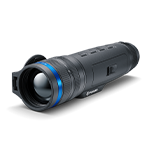 Telos XP50 |
Thermal Sensor: 640×480, 17µm Thermal Sensitivity: <15mK sNETD Lens: 50 mm f1.0 Detection Range: 1800 m FOV: 12.4° Magnification: 2.5 – 10.0 x |
|
|
Thermal Sensor: 640×480, 12 µm Thermal Sensitivity: <25 mK sNETD Lens: 30mm f1.2 Detection Range: 1300 m FOV: 14.6° Magnification: 2.0-16.0 x |
|
|
Thermal Sensor: 1280×1024, 12 µm Thermal Sensitivity: <20 mK sNETD Lens: 50mm f1.0 Detection Range: 2300 m FOV: 17.5° Magnification: 2.0-16.0 x |
|
|
Thermal Sensor: 640×480, 17µm Thermal Sensitivity: <18 mK sNETD Lens: 35mm f1.0 Detection Range: 1350m FOV: 17.8° Magnification: 2.0-16.0 x |
Thermal In Action
Take a look at what thermal can do as we go for a very wet wildlife walk through the Warwickshire countryside. We demonstrate how the extreme thermal sensitivity of the Telos XP50 thermal monocular can pick up something as small as a bumblebee over impressive distances. We’ll even show you how these devices can easily spot the entrance and egress points for roosting bats, making short work of your surveys.
Discover the Range
Now you know more, why not take a look through our extensive range of devices. From monoculars to binoculars, we have a wide selections of thermal imagers and multispectral devices available, each of which has been designed to enhance your viewing capabilities in day- and night-time conditions.
Thermal Imaging Monoculars
From pocket-sized and durable to pro-grade and upgradable, each device in our thermal imaging monocular series features a sensitive thermal sensor and powerful objective lens — providing exceptional detection capabilities and outstanding image clarity. Choose from the Axion Compact series for an unparalleled thermal observation experience from a device that remains small enough to fit in your pocket, the Oryx LRF series for one-handed operation through an intuitive new focus wheel, or the Telos series for ultimate longevity through upgradable technological components.
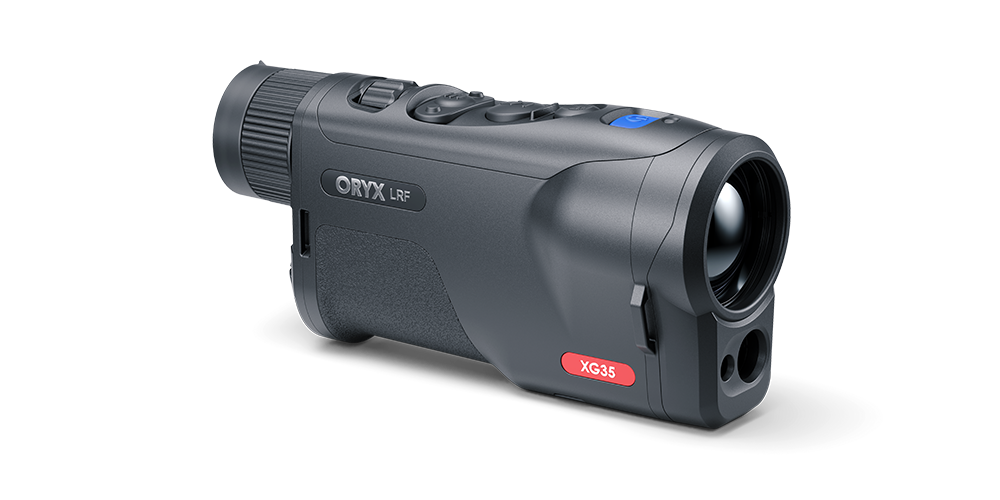
ORYX LRF SERIES
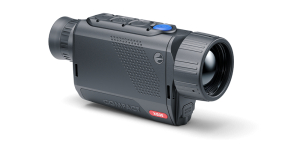
AXION COMPACT SERIES
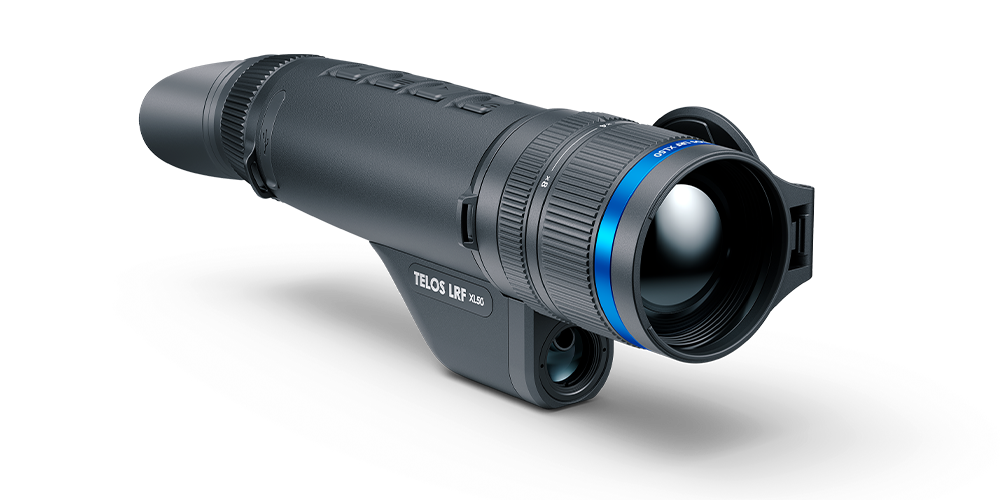
TELOS SERIES
Thermal Imaging Binoculars
Our range of thermal imaging binoculars provide a comfortable observation experience over long periods, with two-eyed observation allowing for a more natural reception of visual information and therefore reducing the likelihood of eye strain and fatigue.
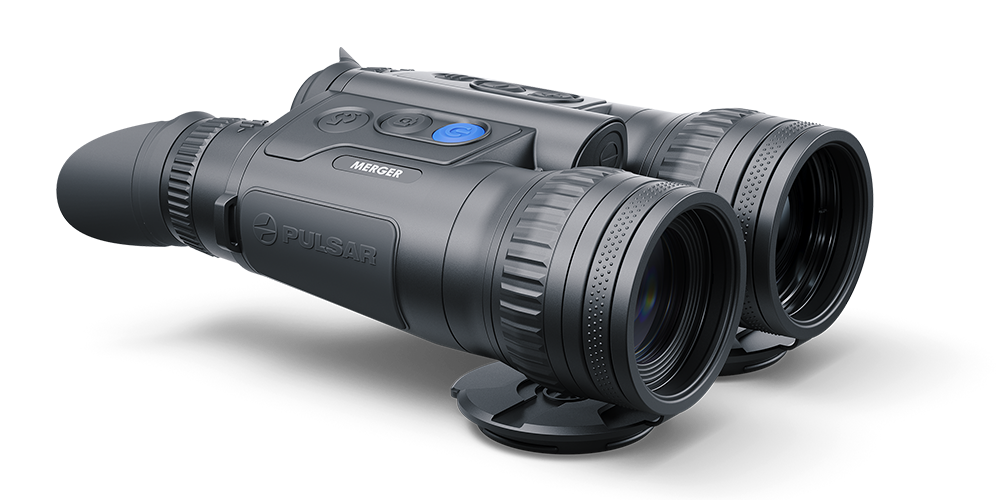
MERGER LRF SERIES
Multispectral Binoculars
With dual thermal imaging and digital night vision channels, our range of intuitive multispectral binoculars will enhance both your detection and identification capabilities — they’ll even allow you to view both channels at once through combined viewing mode and Picture in Picture (PiP) — all whilst retaining the classic, familiar design aesthetics of a pair of traditional binoculars.

MERGER DUO SERIES


